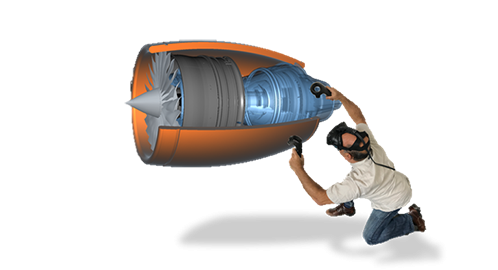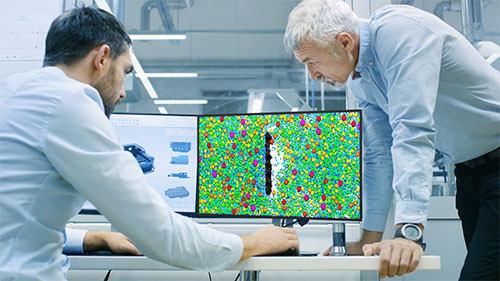How to Manufacture Aerospace Parts for the Future
The confidence to push the threshold of product performance in future aircraft design requires enterprises to weigh the potential trade-offs of their product’s cost, quality, safety, function, and use of resources. The best way for the aerospace industry to meet energy efficiency, safety, comfort, and lightweight goals is to evaluate, early on, if a proposed product is practical when it comes to the selected material type, shape and geometry, production costs, and logistics requirements.
Having reached the limits of conventional airframe and aero-component manufacturing, new concepts and innovative solutions introduce novel materials and processes to increase range for longer, nonstop routes or to improve upon their carbon footprint, while maintaining safety standards. Going forward, product development decisions cannot be made without cross-checking the manufacturing feasibility of those products. The manufacturing requirements of the last century's products are transforming to suit modern air travel aspirations:

- Manufacturing disciplines historically associated with smaller production volumes will be challenged to ramp up to the needs of their expanded use in manufacturing (E.g., composites, with relatively low annual production yield, needs to increase by several degrees of magnitude)
- A single manufacturing industry domain will not monolithically deliver manufacturing processes used to produce vital aerostructures (E.g., metal forming and riveting are not the sole sources of lightweight airframes)
Will the strength and performance characteristics intended for a new aircraft be achievable, as proposed, in the manufacturing delivery of the final product? Applying Virtual Manufacturing, product development and design engineers can validate the proposed manufacturing processes, and material requirements upfront in the development process.
Virtual Prototypes in the Aerospace Manufacturing Industry:
Prevent Downtime and Expensive Rework
Evolve towards a constantly improving production process with ESI’s Virtual Manufacturing solutions. It’s been said that when your only tool is a hammer, every problem looks like a nail. Defining the right material and manufacturing process to deliver a product is a decision that is sometimes made by the availability of the tools on hand. Say you decide to invest heavily in gravity casting simulation technology – how prepared are you for the day your foundry quotes a high pressure die casting project? Or maybe you invest in simulation for stamping and joining sheet metal, and then your product transitions to carbon fiber constructions – will you be ready?
ESI invites you into the world of Virtual Manufacturing – a place where solutions for early feasibility live – a place where you no longer have to rely on 1-step simulation codes to predict design issues. Our Virtual Manufacturing solutions are embedded with process know-how, which helps users of all skill level define a reliable process plan and predict if a part’s design will need changes. This is all done in the early development stages giving you the security of a solid foundation.
More Benefits of Equipping Aerospace Manufacturing Companies with Virtual Prototypes
Aerospace enterprises that integrate Virtual Manufacturing solutions into their product and process validation methods can expect massive time and money savings associated with physical prototyping, not to mention the costs avoided when they can evaluate part and component production in advance.
Leaders in aerospace design and manufacturing – get ready to embark on the journey towards destination 4.0 and be prepared to conquer the manufacturing transformation challenge. Create synergies across your entire product development and production phase – from sheet metal stamping & welding assembly to die casting, sand casting, and investment casting, or even manufacturing resin-infused or pre-preg composite structures – by:

- Ensuring that all team members in every department – design, engineering, manufacturing – seamlessly work together on one, single-core platform across the entire product development phase
- Keeping end-to-end control of your KPIs by minimizing the number of physical prototypes needed for validating feasibility and safety of product designs and manufacturing process designs
- Meeting your start of production target dates and maximizing efficiency by frontloading decision-making and preventing anomalies in downstream processes
- Consistently preventing downtime & rework and continuously improving production process by detecting product and process anomalies (e.g. dimensional accuracy, assembly distortions, accessibility, manufacturability, tooling modifications) early in the development stage
What makes all this possible? It’s the physics of materials. We’ve leveraged a specific and unique expertise in material science that facilitates our customers in the aerospace sector to innovate future mobility in the air with confidence. If you want to boost agility and push innovation without sacrificing safety and quality, we invite you to connect with us. With ESI’s proven Virtual Prototyping approach, together we will get it right® the first time.
